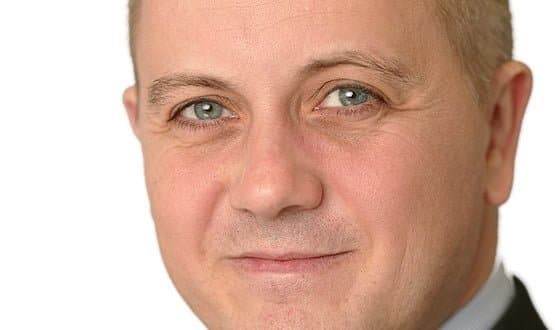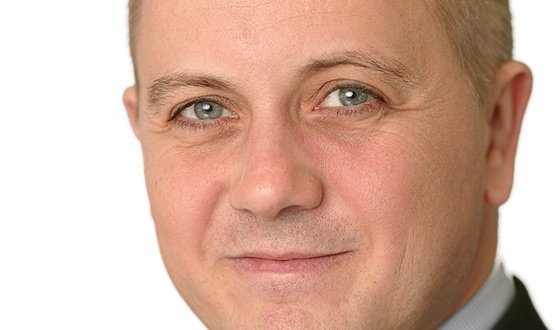EHI interview: Tim Kelsey
- 3 October 2012

Tim Kelsey is a man on a mission: to bring the NHS kicking and screaming into our hyper-connected, digitally-driven consumer society; and in so doing to make it far more transparent, responsive and “socially relevant.”
In his first interview with eHealth Insider, Kelsey made it clear patients will be the touchstone, and every decision must be based on whether it will directly benefit them: “The priority is to massively improve the quality of the patient experience,” he says.
No more wires
The NHS Commissioning Board’s first national director of patients and information is a very different kind of information leader.
He’s not focused on the networks, servers and software of electronic patient records, e-prescribing and other systems, but more on a heady mix of “data liquidity” and making the NHS a “relevant social movement.”
If the ground-breaking role sounds like it’s been tailor-made for the ex-Cabinet Office transparency tsar and Dr Foster co-founder, there’s a reason.
“The role is part chief technology officer, part chief information officer and part marketing director,” Kelsey told EHI. “It’s a new role I’ve campaigned for, for quite a while.”
He compares the role to that of an American city’s CIO. “The role is to fashion the data infrastructure so we have free flowing data,” he says.
“We need to refashion our view of vision of what technology in health is all about, and we need to fix it firmly on the consumer interest. Our first question needs to be: ‘to what extent does a technology investment prioritise the needs of the patients?’”
The result, he anticipates, will be “a multi-channel service that enables people to do things for themselves, like order a prescription, book an appointment, find out about results, make a compliant or provide feedback on their doctor or nurse.”
Kelsey says that the intention is to put the enabling information infrastructure in place in the shape of an “integrated, seamless customer service platform”, based on “open data”, which can then be interacted with through a series of different apps.
Learning to code
In post since mid-July Kelsey is just beginning to appoint his directors and get plans approved by the NHS CB, which comes into full operation in April 2013. However, he promises eye-catching initiatives will be announced in the next few months.
“We will be announcing some initiatives in the first phase that will be very refreshing and help re-launch the power of technology and its effectiveness in healthcare.” Look out for announcements around both open source and open data.
Kelsey says priorities will include “getting to deployments at scale” of proven technologies and “making the NHS a very positive environment for entrepreneurs of all types, whether they are for profit, non-for-profit or just people with good ideas.”
A straw in the wind was the NHS CB’s involvement in the latest NHS Hack Day event, which took place in Liverpool at the end of last month.
While past NHS IT bosses sought to wrestle with the big projects of the NPfIT-era, Kelsey would rather get NHS staff to learn how to code. So look out as well for announcements on Code4Health, first announced on Kelsey’s Twitter account, “which will allow doctors and nurses to learn to become programmers.”
The initiative, modelled on “marvellous, brilliant, genius-level” Code for America, is not being set up so nurses can write the next Lorenzo in their lunch-times.
Instead, Kelsey wants it to unleash a wave of entrepreneurship, creativity and innovation from all quarters of healthcare. One of the key enablers will be liquid, transparent data.
Kelsey says that transparency is not just about publishing data but enabling users to work with the data. “I don’t want there to be any impediment to people working with that data, whether it be life sciences research or equally important ehealth devices.”
Building and disrupting
He says the NHS CB is in “a unique place to make this happen”, with its direction of £80 billion of spending. “If you like it’s up to us now to choose.
“If we open up our doors to the rest of the community and say ‘this is everyone’s problem’, we can do that. And what I’m saying is that’s what we are going to do.”
Huge faith is being placed in the potential of the participatory ideas at the centre of Web 2.0, drawing heavily on the US experience. This is a not the dour technology diet the NHS has been used to, and it’s a heady brew that divides opinion.
But Kelsey is anxious to reassure sceptics that his will not be a scorched earth approach. “People will be concerned that I am tearing everything up that has come before, and that’s not my approach,” he says.
There is, he adds, “a lot of good” that has been done to build on. “There are other areas where we will need to be disruptive – such as around data quality.”
And, of course, there will still be a place for heavy lifting infrastructure and clinical IT. Responsibility for this will sit primarily with the NHS Information Centre, slowing being recreated and rebadged as the ‘new’ Health and Social Care Information Centre.
Dividing opinion
Kelsey fans, and he has many, find him innovative and refreshing, admiring his energy and original thinking. Sceptics point out that he has little experience of Whitehall and question whether he’ll stay the course or instead burn brightly but briefly.
Much will depend on the team around him and their ability to deliver early successes for patients. Kelsey says that without this digital crusade the NHS risks losing its credibility by failing to become a relevant “social movement”, one “committed to participation.”
Unless the NHS becomes far more responsive, he argues it will fail. “I profoundly believe that for the NHS to be a sustainable movement in the future it has to become legitimate with the people it is serving.”
Asked how it’s going so far, Kelsey says: “It’s crazy. This is a genuine start-up. I’ve got some very committed staff but very few of them.”
He concludes: “I think there is a great opportunity we have here that may never come again. We have to deliver an NHS that responds to the needs of the people that use it.”


